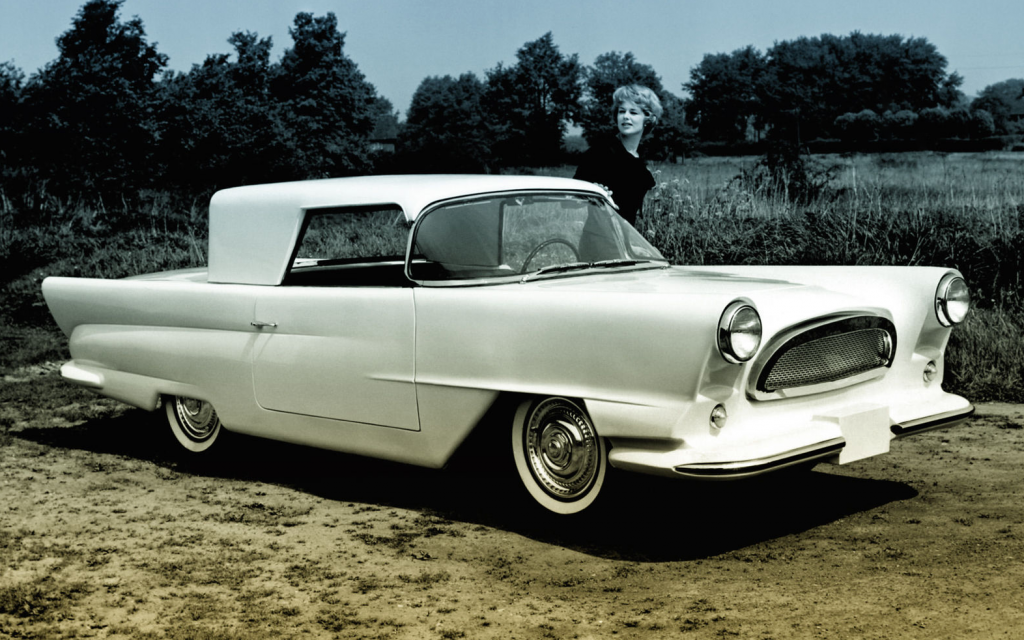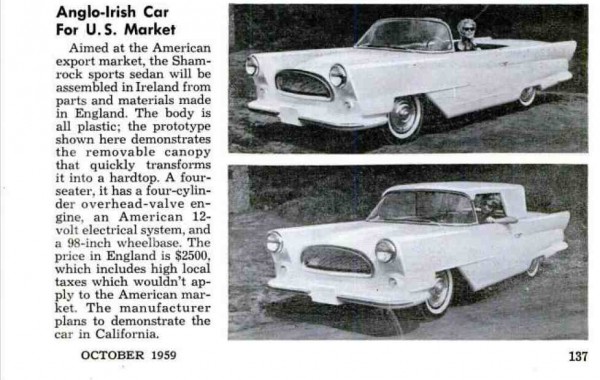|
|
|
Oct 13, 2018 20:50:10 GMT
|
Triple wipers? Most would go to the Jag E-Type, but instead I'd like to mention one of the British Car Industry's most traditional dragsters, the Morgan Plus 8. Looks like it's from the 30s? Check. Some wooden construction? Check. Loads of wood and leather? Check. Next to no weather protection? Double check. 3 Wipers to keep the screen clear even though you can barely open your eyes due to the rain? Oh yes sir. And it's got a V8. LOVELY!  |
| |
|
|
|
|
|
|
|
Oct 13, 2018 22:49:08 GMT
|
This is a Retro Morgan built in 1950 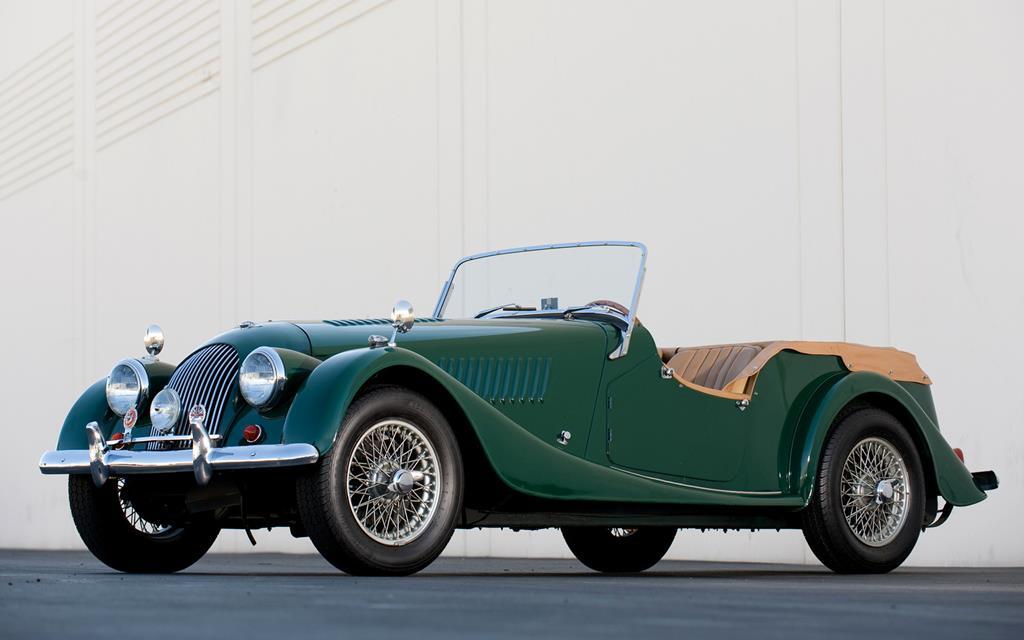 This doesn't belong here. It's not retro at all a 2018 Morgan 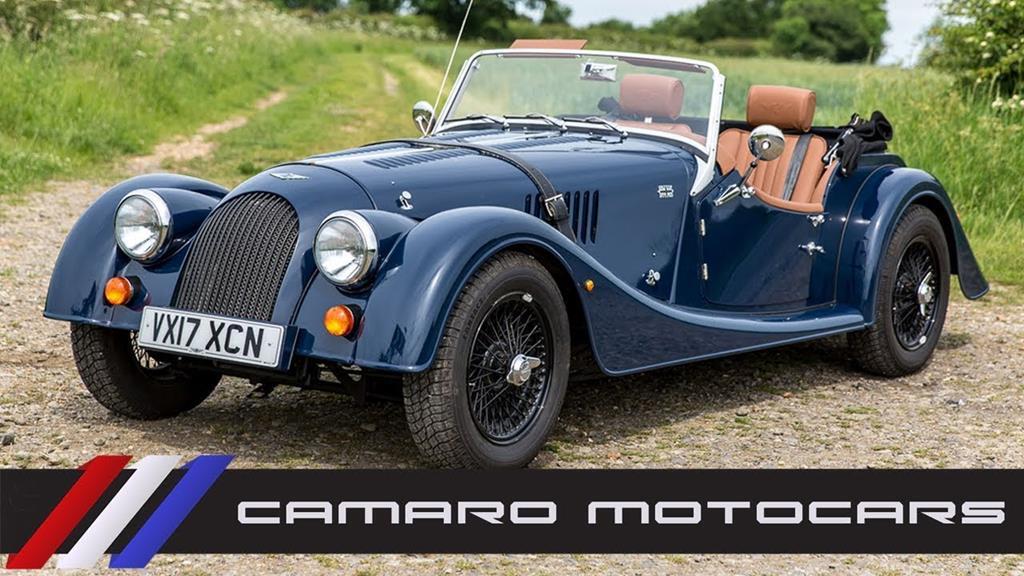 |
| |
|
|
vulgalour
Club Retro Rides Member
Posts: 7,285
Club RR Member Number: 146
|
|
Oct 14, 2018 14:41:32 GMT
|
The first properly new car Morgan produced since 1948 was the Aero 8, a strange blend of new and old, stubbornly retaining the pre-war design queues while also bringing things up to date. The problem with those pre-war front wings is that once you get above a certain speed, they start to create lift. You can either ditch the front wings, as many racers did, or modernise the body so it's actually aerodynamic rather than just looking aerodynamic. That's essentially the route Morgan took with the Aero 8. What they also did was use the headlights from Rover's last car, the BMW MINI. That's right, Rover's last car before they disappeared completely was actually the Mini, not the 75. There's enough information scattered about fora and other internet cubbyholes that catalogue all the little Rover stamps and markings on the pre-production car, on parts that are unique to the Mini rather than parts bin items. There's also records of designs, etc. for those wanting to hunt them out. Bit too good for Rover, so BMW nicked it and rode the massive success that it became. The Morgan ended up with the Mini headlights to counteract its biggest flaw which was the original cross eyed look of the VW Beetle headlights it originally wore. Which brings us neatly to another anachronism by association the VW Type 2, sold in Brazil as late as 2013, and which switched to a water cooled engine rather than the traditional air cooled engine, which is why they get that weird looking front end to accomodate the radiator. Anyway, the car I'm linking here isn't that, it's the car that provided the engine to the Brazilian market Type 2 which is the VW Gol. It might look like a Mk2 Polo, but it isn't, and it started out with a front-mounted air cooled engine as found in the Beetle.  |
| |
Last Edit: Oct 14, 2018 14:42:52 GMT by vulgalour
|
|
|
|
|
|
|
This sexy Brazilian shown by vulgalour is definitely not the only sexy Brazilian. It's hard to resist a good executed Brazilian. I really like this one... 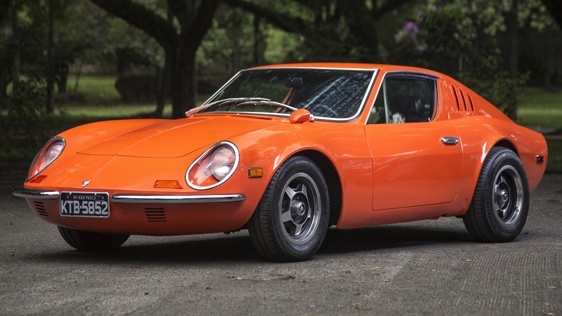 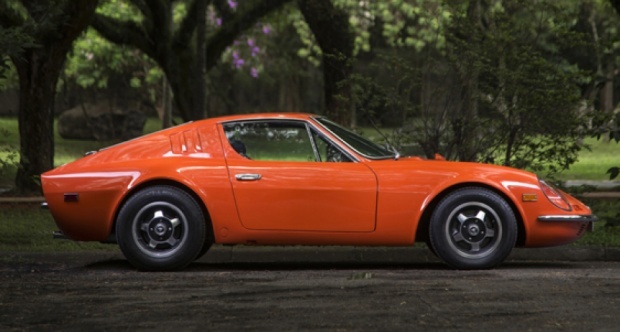 Puma was a Brazilian specialist car manufacturer which built cars from 1966 until roughly 1995. High import tariffs effectively closed Brazil during much of this period to foreign-built cars. This limited the vehicles available to the average Brazilian to those built locally by foreign manufacturers such as Volkswagen and General Motors (which established Brazilian manufacturing plants), and the products of local companies. The Puma is a Volkswagen-based specialty sports car built in Brazil. Strict Brazilian regulations which restricted imports to encourage domestic automobile production led to the development of the Puma and other specialty vehicles. Production began in 1964 using DKW components, with a switch to VW components in 1967. This necessitated a change from front engine, front-wheel drive to rear engine, rear-wheel drive. |
| |
Last Edit: Oct 15, 2018 5:12:32 GMT by rblote
|
|
vulgalour
Club Retro Rides Member
Posts: 7,285
Club RR Member Number: 146
|
|
|
|
|
That's a good looking thing, has hints of Dino and Cosmo in the headlights, Miura in the door B pillar profile, Opel GT in the overall shape and size. Some of the other body shapes have hints of Alfa to them too. Brazil has lots of exotic (to us) gems like that in their car history.
|
| |
|
|
|
|
|
Oct 16, 2018 20:32:58 GMT
|
The Puma was a small fibreglass sports car based on Beetle running gear, so as I own one, I am going to give you another small fibreglass sports car, this time based on the Mini, the Midas. First launched in 1979, approx 57 Mk1 models were produced (or 67 depending on who you believe), before Gordon Murray of Brabham F1 fame redesigned it slightly, adding better aerodynamics, flared wheelarches and a revised front end. Incidentally it has a standard Mini front subframe and a bespoke rear beam axle with Mini radius arms & coilover shocks. The rear lights are TR7, headlights are Allegro/Toledo and petrol cap is also early TR7. Petrol tank is Mini Van/Pickup, rear view mirror and windscreen are Fiat 126 and the mirrors are from a Renault 14. The pic with Murray shows what a tiny little thing it is. Shame it's beige...  |
| |
Last Edit: Oct 16, 2018 20:36:56 GMT by mrbounce
|
|
vulgalour
Club Retro Rides Member
Posts: 7,285
Club RR Member Number: 146
|
|
|
|
Do you know, I'd always assumed Gordon Murray was Scottish, turns out he's actually South African, born to Scottish parents. So, South Africa and fibreglass cars then. Up until now I only know South Africa vehicle production as being a military thing so fully expected to be looking at something heavy until I stumbled across South Africa's first production car, the 1957/8 Protea from GRP Engineering. It's a surprisingly well proportioned little thing and unusual in that for a first production car, it's a sports car. Normally, firsts like this are fairly basic, cheap transport focusing on getting the country moving with local products rather than making something fun. But then by the time the Protea was released, other manufacturers like VW and GM were already selling cars in South Africa so perhaps that more ordinary demand had no need to be met by the domestic market so they could kick off with something fun.  It's incredibly difficult to find anything out about the Protea, it's such a short lived and low production thing. There's an interesting article here: www.forbesafrica.com/focus/2018/03/27/african-car-no/ There's a tiny snippet of information here too: www.travelandtradesouthafrica.com/2012/03/vintage-and-classic-cars-south-africa.html"John Streeter and Ivor Smith produced a handful of crude cycle cars in 1913. These are generally regarded as the first cars to be built in South Africa. Sales were limited to three units only. The next effort to produce a South African car occurred 40 years later. Roland Fincher, Alexander Roy, John Myers and Miriam and Robert Hudson built the Protea. 20 units were produced and the company was incorporated in November 1956. The Protea made its debut at the Rand Spring Motor Show in 1957. Although the Protea won the Pietermaritzburg Six Hours’ Endurance Race, Myers and John Mason-Gordon driving, it was not a financially viable car." What that does shed some light on is that there was something that preceded the Protea but from the sounds of it, they were more South Africa's first car, rather than first production car. I've been unable to find any information on these early cyclecars beyond that brief mention above so, for the sake of this thread, I shall disregard it unless of course someone can dig up something on that. This was not a route I expected to find myself going down from a Midas, so that's been educational. I just wish I could have found a bit more out about the Protea to share with you. |
| |
|
|
|
|
|
Oct 18, 2018 14:39:28 GMT
|
did someone say south africa and GM ? GM officially pulled out of SA in 1986, but the cars continued to be made under license by a new company formed DMC (no not that one  ) delta motor corporation. they produced various usual opel products, some a bit more confusing than others (like the opel monza, which was a saloon astra, jsut to confuse us europeans where it was the old coupe autobahn stormer) two cars stick out (to me anyway) the 1989 homologation special kadett superboss. the naming convention in SA was gsi (1.8) boss (2.0 8v) big boss (2.0 16v) and this 'ere superboss which was a modified big boss! they added a shrick camshafts, brospeed exhaust, remapped ecu and a limited slip diff (jealous) which lifted the power from 150bhp to just over 170. it also had various styling cues like distinctive 15" wheels and badges, nifty air intakes. 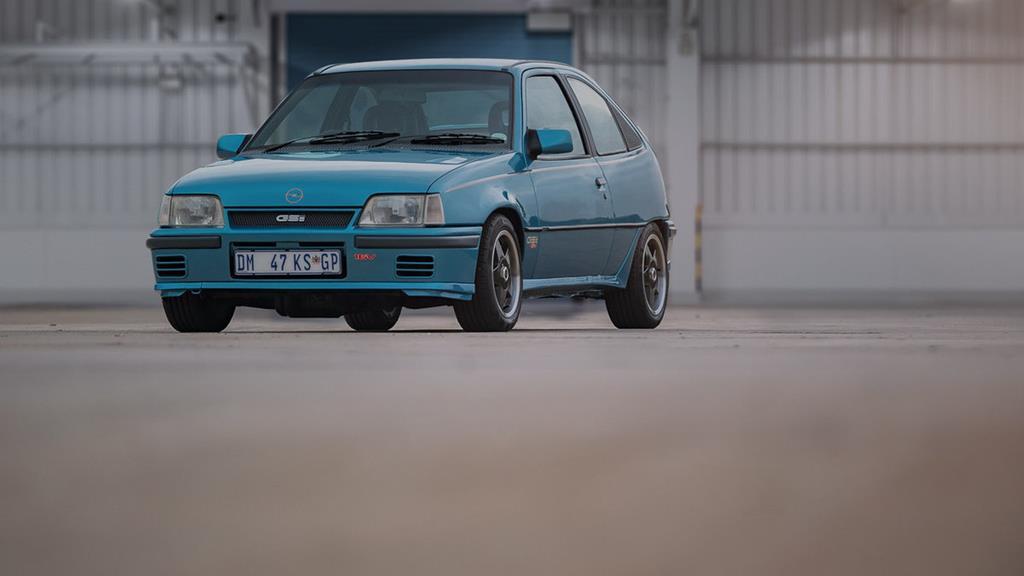 another corker was the 200TS, in essence a luxury 4 door mk3 astra gsi but with added calibra turbo engine, 6 speed getrag gearbox, calibra turbo wheels and brakes (but not the 4x4 system) 200bhp and matching torque this was a proper, good old fashioned Q-car, you might even say ground breaking in a generation before 200bhp hot hatches became bread and butter, now even to the point considered slow !  |
| |
|
|
|
|
|
Oct 18, 2018 16:17:19 GMT
|
Q car you say?? How about: Qvale was an independent Italian car manufacturer founded in 2000 by the American Bruce Qvale. Qvale's sole product was the Mangusta, originally the De Tomaso Biguà. Financial troubles forced De Tomaso to look for a business partner whom he found in the American Bruce Qvale, an importer and distributor of a number of exclusive cars in the United States. The De Tomaso Biguà was renamed the Mangusta, a historic name (see De Tomaso Mangusta). As the first cars were about to be delivered, Qvale and De Tomaso parted ways. Qvale took over the factory and the car's production. De Tomaso, however, refused to allow the use of his name. The first Mangustas were delivered to their customers with De Tomaso badges, which subsequently had to be exchanged at the dealers for the now-official Qvale logos. Between 2000 and 2002, Qvale built 284 cars, the majority of which were exported to the USA. The lack of a well-known brand name, the slowing economy, and the unusual design made marketing the car difficult. In 2003, Qvale sold the rights to the Mangusta to Britain's MG Rover Group. In 2004, MG launched the MG SV and SVR. Designed by MGSR (MG Sport & Racing, the racing division of the MG Rover Group), the SV was based on the structure, suspension, engine and gearbox of the Mangusta. The car was built largely in Italy, with some fitting and pre-delivery customisation in the UK. So we get to:  |
| |
Last Edit: Oct 18, 2018 18:49:01 GMT by accord83
74 Mk1 Escort 1360, 1971 Vauxhall Victor SL2000 Estate.
|
|
vulgalour
Club Retro Rides Member
Posts: 7,285
Club RR Member Number: 146
|
|
Oct 18, 2018 18:19:08 GMT
|
Which neatly takes us back to Italy because guess where those headlights are from. That's right, a car that's pretty much at the opposite end of the motoring spectrum in the form of the once ubiquitous Fiat Punto, a surprisingly rare sight in the UK now. Here's one on German plates for some reason.  |
| |
|
|
|
|
|
|
|
Fiat build my first brand new car; a Fiat Panda CLX Selecta with sunroof and Borbet mags.I can't find a photo but it had the same color as this one 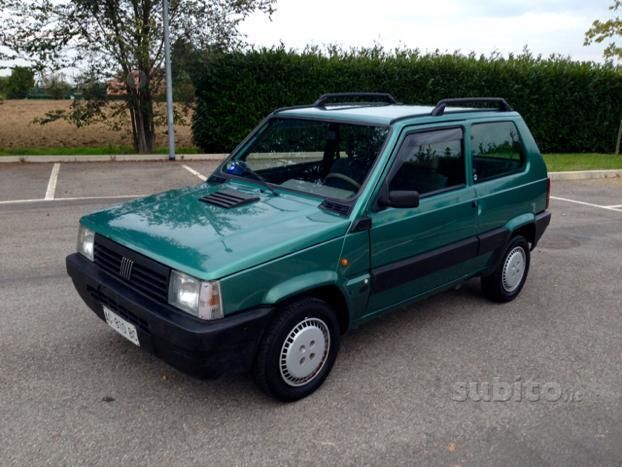 |
| |
|
|
|
|
|
Oct 21, 2018 23:11:07 GMT
|
Panda cars.... History of the term The term "panda car" was first used to refer to British police cars painted with large panels of light blue and white. In Britain, they were never painted black and white, so "panda" appears to be a reference to the cars as seen on popular British television shows, such as Z-Cars, via the medium of black & white TV which was commonplace at the time. Ford Anglia car in pale blue paint, with white overpainted doors and roof. The roof also carries a Police lightbox sign and flashing blue light. Ford Anglia panda of the 1960s The first use of panda cars seems to have been in the Lancashire Constabulary area in about 1965. The chief constable described the use of blue and white Ford Anglia panda cars in Kirkby in an article in The Times on 26 January 1966. These were blue with a white line painted around them. In 1967, the Dunbartonshire force bought two Hillman Imps (subsequently nicknamed Pinky and Perky) for escort duties on the A82 road; one was blue, the other white. The boot lids, bonnets and doors were then swapped to create a panda car-style scheme.[1] In the 1980s, police cars in the United Kingdom began to be ordered in white to reduce purchase costs, usually with orange or red "jam sandwich" reflective stripes. Today, patrol cars use Battenburg markings or stripes, although many forces still use a mainly white colour scheme. The name panda car or panda is still sometimes used. 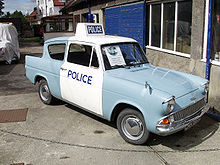 Never knew that this was called a Panda car...The Ford Anglia |
| |
|
|
vulgalour
Club Retro Rides Member
Posts: 7,285
Club RR Member Number: 146
|
|
Oct 21, 2018 23:53:30 GMT
|
The only interesting thing I know about the Anglia is that the reverse rake rear screen was so designed to keep it clear of rain, thus improving rear visibility, and to give more headroom to rear seat passengers. Or at least that's what I thought it was for. While it's true that it does offer these things, it seems that it was more a bit of clever marketing. As the fifties became the sixties, Fords in the US were enormous, far too large for our tiny island. People still wanted a piece of that glorious American dream right here on our grey little rock so Ford's answer was to scale things down, right down. The Anglia ended up being a very smart little car and looked quite sharp and stylish alongside the dumpier offerings from other domestic manufacturers with definite American styling influences to its overall shape, toned down with a conservative British approach to chrome and overall size.
So why did that rear screen exist then? The answer lies with those enormous American sedans and the desire for fresh air, and gadgets, and weirdness, and space age stuff. A wind-down rear window was what Ford were offering their American customers and to accomodate that you really had to follow the angle of the rear seat which, in turn, led to the distinctive reverse-rake screen which accidentally created a bunch of benefits beside the sharp 60s look. Fit it with a wrap around screen instead and tone down some of the extravagance of the Continental below and you end up with basically a Mercury Monterey.
 The thing is, that doesn't really look anything like the Anglia does it? It reminds me much more of another nearly-60s reverse-rake rear screen car that was built in very small numbers in Ireland, the patriotically named Shamrock. It's based on an Austin A55 with a fibreglass body, unlike the unibody all steel construction of the Contintental it seems to mimic. It's not a looker and was not a big seller. It was intended for export to America and there was at least one dealer ready to do just that, they're even collectible now. Sadly, like so many dreams of what the residents of these green islands thought Americans wanted, the reality fell far short and ended up creating something that looked strange here and comical there.
|
| |
|
|
|
|
|
|
|
A reverse raked rear window you say? 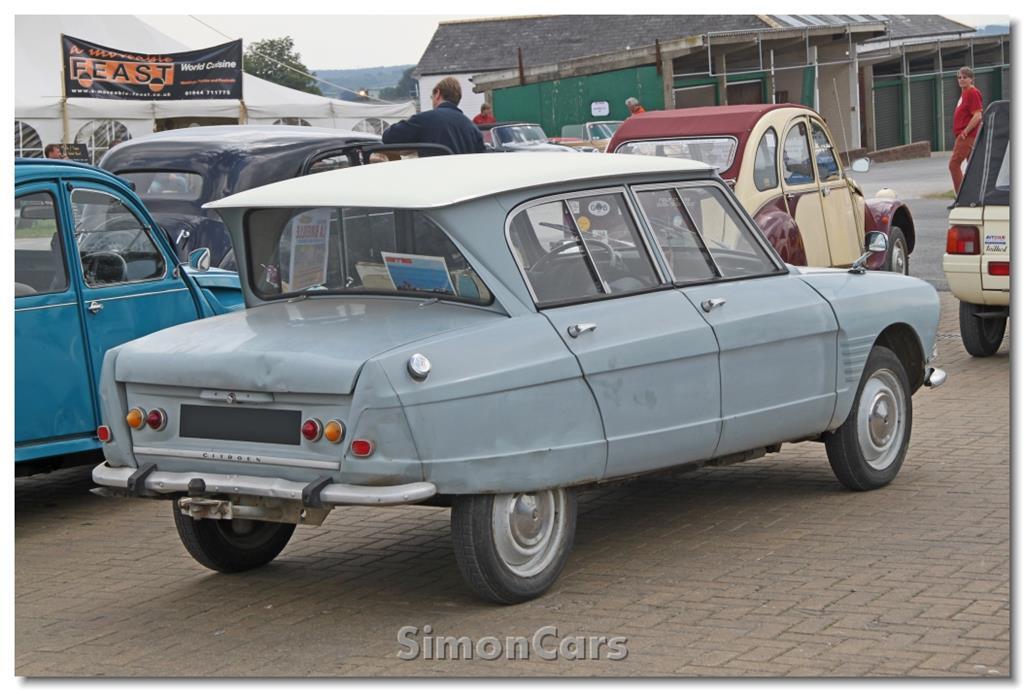 Have a Citroen Ami 6. |
| |
Last Edit: Dec 2, 2018 9:11:35 GMT by s1105117
|
|
|
|
|
|
|
Or if you prefer the rear window sloping radically in the other direction, then you might end up with the Ami M35 with a rotary engine too, designed in collaboration with NSU.   |
| |
|
|
|
|
|
|
|
Nice motor that. NSU and Rotary Wankle engine? Gotta be 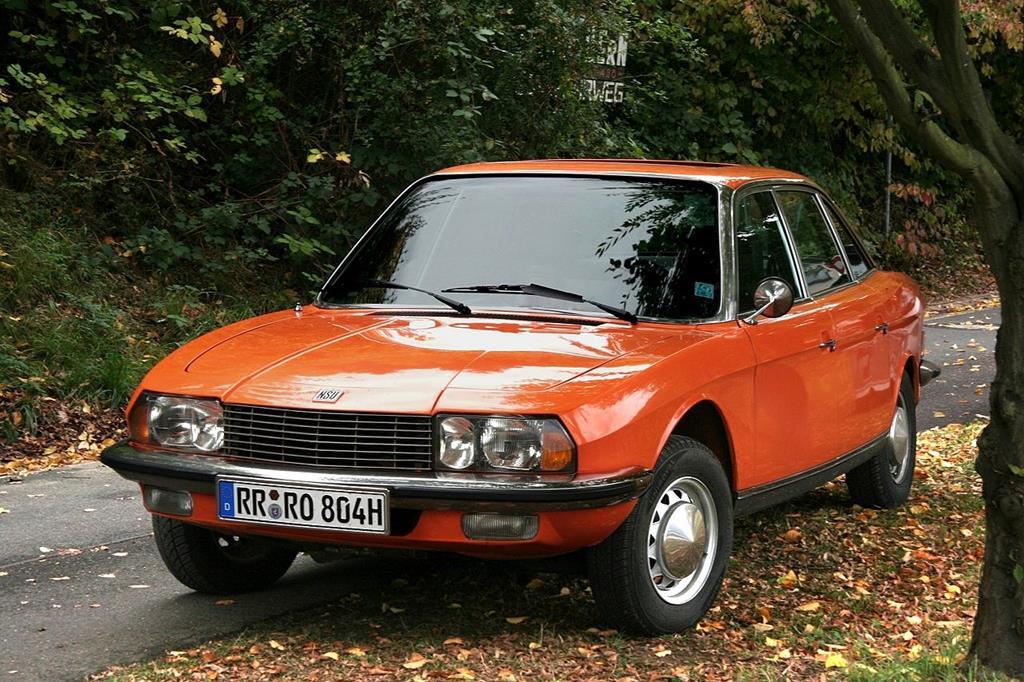 NSU RO8O. |
| |
Last Edit: Dec 2, 2018 13:51:02 GMT by s1105117
|
|
vulgalour
Club Retro Rides Member
Posts: 7,285
Club RR Member Number: 146
|
|
|
|
The most interesting thing about the Ro80 is probably its styling. This is a car build in the 1960s that still looked relevant in the 1990s. The curving styling of the car is not like anything else, combined with the unusual engine choice and body-matching lights front and rear, it didn't grow dated in the same way as other cars. There's other cars that were out of step, naturally. The SAAB 96, the first Ford Sierra, the Austin Princess... but all of those cars look old now, dated, classic. The NSU doesn't, it's not of a particular era, it stands alone. There are very, very few cars that achieve that. The only other car I can think of that comes close to this is the Nissan Rasheen. It's at odds with its contemporaries, and the styling is such that it's not immediately obvious at first that it's from Nissan. It's not the same timeless thing as the Ro80 has, it's just the only other car I can think of that comes close to it because it's not trying to look like its from another era, it's just... different.  |
| |
|
|
|
|
|
|
|
The Rasheen is certainly an oddity, built on a Sunny platform using Pulsar 4WD parts. Most I believe were the 1.5 petrol but it also was offered with an SR18DE and an SR20DE engine. Interestingly, Nissan used contract manufacturer Takada Kogyo to build them, as they had the Figaro and another car before. As we all know what a Figaro looks like, lovely as it is, I will opt for the alternative, which was marketed without Nissan in the name, to appeal to a new crowd (much like Citroen's modern DS brand). The Be-1:  |
| |
|
|
murf
Part of things
 
Posts: 269
|
|
|
|
A good old small 4x4 link... The Ford Bronco  |
| |
|
|
dikkehemaworst
Club Retro Rides Member
Posts: 1,636
Club RR Member Number: 16
|
|
|
|
Bronco is launched in 1966. Thats also the year they made the first prototype of another famous 4x4 , the range rover. The first one was Called 100 inch wagon  |
| |
|
|















 ) delta motor corporation. they produced various usual opel products, some a bit more confusing than others (like the opel monza, which was a saloon astra, jsut to confuse us europeans where it was the old coupe autobahn stormer)
) delta motor corporation. they produced various usual opel products, some a bit more confusing than others (like the opel monza, which was a saloon astra, jsut to confuse us europeans where it was the old coupe autobahn stormer)






